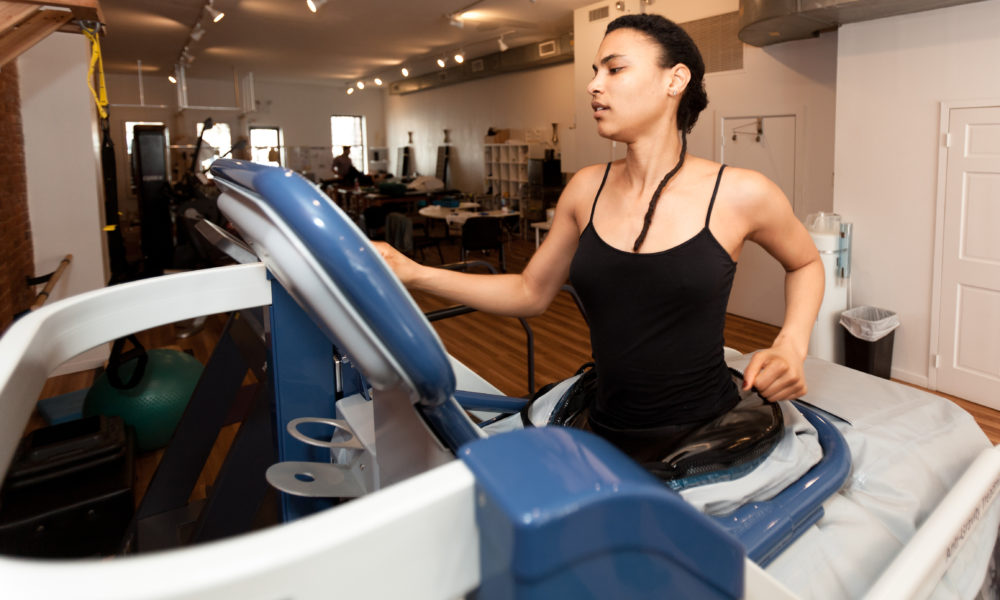We know that staying fit over the winter means you’re more likely to spend time exercising in the gym or at home than outside. However, there are benefits to exercising outdoors in the winter that the gym can’t provide – and with the pandemic still not under control, the gym might not be an option. Being outside exposes you to the sun, which will help boost your mood, increase your vitamin D levels, and enhance your immune system. Plus, with the variety that outdoor exercise can provide, you might even burn more calories. Let’s dive right in with winter exercise tips to help you stay active and in shape this winter.
Embrace Winter With These Winter Exercise Tips
Though it’s often tough to head outside on rainy and snowy days, we’ve got some winter exercise tips to help you stay warm and injury-free in the colder weather.
Wear The Right Clothing
Wearing the right clothing might be the most crucial winter exercise tip we can give. The quickest way to lose body heat is to get wet. Water is an efficient heat conductor, which means it moves heat away from your body to the cold air outside, quickly leaving you cold and miserable. Being cold and wet is a surefire way to cut your workout short and also increase the risk of hypothermia and even frostbite.
To avoid wet fabric leaving you chilled, skip any activewear made from cotton. Cotton soaks up sweat and rain and holds in moisture. Opt instead for synthetic fibers like polyester, nylon, and polypropylene that is designed to dry quickly.
Something else we should mention is not to dress too warmly either. Exercise already generates a considerable amount of heat, which makes you feel warmer than you are. But the evaporation of sweat pulls heat away from your body, which will make you feel cold. The solution is to dress in layers that you can remove as you sweat and put back on as needed. Start with a thin layer of synthetic material to keep sweat off of your body. Then add a layer of fleece or wool for proper insulation. Top it off with a waterproof and breathable outer layer.
Of course, you might need to experiment to find the right combination of clothing styles to match your workout intensity. A heavier person might not need as much insulation as a lean person. Keep in mind that stop-and-go interval activities like a mix of walking and running might make you more vulnerable to the cold. Especially if you’re working up a sweat and then cooling down quickly, you might not have as much fun with your outdoor workout routine.
Protect Your Skin
You probably already know that fingers, noses, toes, and ears are the most affected most by chilly temperatures. Blood is sent to the core of the body when it’s cold out, leaving less blood and heat available to hands and feet. To help avoid freezing your extremities, we suggest wearing a hat or a headband, and also gloves or mittens. You can always take them off if you’re getting warm and tuck them into your pocket or a fanny pack. Thick socks are also a good idea. As we mentioned above, any add-ons you use to protect your skin should be synthetic rather than cotton.
It might also be a good idea to consider the design of your shoes. Running shoes are often designed to let heat escape, but during winter, the cold is coming in. You might want to invest in shoe covers to help keep the cold out. Exercise and sport equipment stores will give you some advice on what shoes are best to withstand the elements.
Another way to protect your skin is to drink lots of water. The winter air is dry as well as cold, and so drinking lots of water will help. Use moisturizing cream or lotion and maybe even use Vaseline to sensitive areas like your nostrils, tip of the nose, and ears for additional protection. Face coverings will also protect your face from the elements.
Don’t forget about the sun! Even in the winter, you are still susceptible to sunburns. Plus, snow reflects up to 80 percent of UV rays, so if you’re out while it’s snowing, you can be hit double by sun rays. This is important to consider if you’re skiing or snowboarding, where not only are you exposed to because of the snow reflection, but being higher up also increases your UV exposure.
Protect your skin by using sunscreen and wear UV-blocking sunglasses.
Don’t Skip The Warm-Up
We’ve mentioned warm-ups before, and we’ll say it again – no matter the weather, your body needs a good warm-up. However, it’s especially essential to warm-up when preparing for cold-weather workouts. A dynamic warm-up can increase blood flow and temperature in the muscles to decrease the risk of injuries.
Working out in colder temperatures increases your risk for sprains and strains. A cold rubber band snaps quickly when stretched, but a warm one is more pliable. Your muscles work similarly. The best warm-up will depend on the workout you’re doing, but at the end of the day, all warm-ups should include low-intensity movements that mimic the exercise you’re about to do.
A warm-up is not static, stretch-and-hold movements. Those types of stretches are best at the end of your workout, during the cool-down. Ask your physical therapist what exercises will be best for your cold-weather exercise routine.
Focus On Your Breathing
The last thing we want to mention is your breathing. If you’ve ever worked out in colder weather, then you know that it feels different than exercising in warm weather. Frequently it can hurt to breathe because of how your body is reacting to cold, dry air. In colder temperatures, your airway passages tend to narrow, which means that inhalation is more difficult. Breathing in through your nose can help warm and humidify the air you’re breathing, but it’s not always feasible.
We suggest wrapping a bandanna or scarf around your mouth or another sports mask to help trap water vapor in when you breathe out so that the air is moister and more comfortable to breathe as you continue your workout. Luckily, with COVID-19, we’re all getting used to wearing masks outside, and more companies are developing breathable masks that also filter out potentially harmful contaminants. It’s easier than ever to find masks and scarves that work great for a winter run.
Conclusion
It’s not for everyone, but exercising outside can invigorate you and give you a connection with nature you might have never had before. Without the right preparation and proper attire, cold-weather exercise can be uncomfortable and even dangerous. Start by making a plan and investing in suitable clothing. Avoid extreme or icy conditions and get back outside.
Outdoor exercise can be an enjoyable experience, even when the temperature drops. Ask your doctor or physical therapist for more tips on adjusting your workout for colder weather to make sure you avoid injuries. Do you have a nagging injury that is currently preventing you from getting outside? Make an appointment with us! A physical therapist’s goal is to get you moving and back to doing the things you love, even in the winter. We’d love to answer your questions and see how we can alleviate your pain.
.png?auto=format&auto=compress&h=150)
